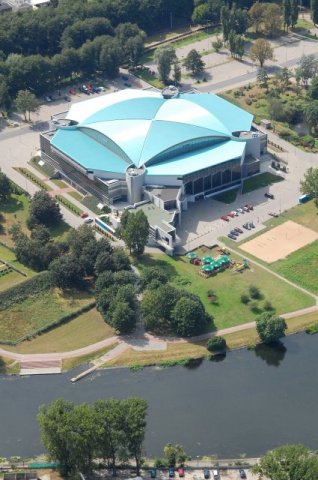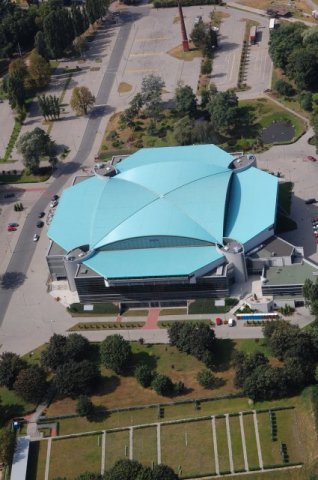Closed Circuit Television
Closed Circuit Television - also known in shortcut as CCTV. This system enables the transmission of video from cameras or video recorders to connected monitors and TV sets in order to monitor a certain area - eg an office building, public facility or industrial plants.
CCTV - what is it for?
Closed Circuit Television system is currently one of the basic elements of security surveillance systems in various facilities. The use of CCTV allows to marginalize the potential risk of intrusion, robbery and burglary in a protected facility, protecting property and health of people staying in it.
The essence of CCTV monitoring is based on the recording, archiving and observation of images transferred from cameras included in CCTV systems.
CCTV - applied technologies
Among the currently used technologies on the market, we can distinguish three types of cameras that form monitoring systems, these are cameras: analog, IP and HD-CVI, AHD and HD-TVI.
CVBS analog cameras
CVBS (Composite Video Baseband Signal) cameras are one of the oldest technologies on the market. Cameras of this type are slowly being replaced by newer technologies, but due to the attractive price they are still enjoying a certain popularity in CCTV monitoring systems in our country.
The advantages of analog cameras
- good price,
- high quality of vision at night,
- easy configuration and assembly.
Disadvantages of analog cameras
- poor image quality,
- high susceptibility to interference.
HD-CVI, AHD and HD-TVI cameras
CCTV is largely based on cameras made in the following standards: HD-CVI (High Definition Composite Video Interface), AHD (Analog High Definition) and HD-TVI (High Definition Television). Cameras of this type are characterized by resolutions ranging from 1 to 2 megapixels.
High Definition Composite Video Interface Standard
This standard was based on a coaxial cable and allowed for a significant improvement in the captured and transmitted image resolution with increased transmission distance (up to 500 m on coaxial cable and 100 m on twisted pair).
The most important advantages of the HD-CVI standard include:
- 1080p or 720p image resolution,
- no transmission delay,
- no problems with losing frames and signal loss,
- low susceptibility to interference,
- good price.
Analog High Definition Standard
Many objects located in Bydgoszcz use CCTV monitoring based on the AHD standard. These are cameras based on analog technology, which enable transmission of HD (720p) and Full HD (1080p) images. The transmission is possible for a distance of 500 m on a coaxial cable or up to 250 m on a twisted pair cable. The big advantage of the AHD standard is that there is no need to change the recorder when transferring from analog cameras to AHD cameras.
The advantages of the AHD solution are:
- no delays,
- 720p or 1080p image resolution,
- no need to modernize the CCTV infrastructure when switching from analog systems,
- the possibility of cooperation between AHD cameras and analog cameras,
- low susceptibility to interference,
- good price.
High Definition Televisio Standard
Monitoring based on HD-TVI is a solution introduced by Hikvision. It is not compatible with any previous technology and enables transmission of 720p and 1080p image quality over a distance of: 500 m coaxial cable or 200 m twisted pair. The features and benefits of the HD-TVI standard are similar to the AHD and HD-CVI standards.
IP cameras
Closed circuit television made in IP technology is one of the most interesting and fastest growing solutions. This type of camera transmits the image via LAN via a twisted pair cable. Cameras of this type can be powered from a switch or PoE power supply or using a traditional 12 V power supply. There are many advantages to using IP cameras in CCTV.
Advantages of IP cameras
- great picture quality,
- a wide selection of cameras,
- the ability to transmit both image, audio signals and many other information,
- no susceptibility to interference,
- ease of development of CCTV television systems.
Disadvantages of IP cameras
- High price,
- Complex configuration,
- The transmission delay depends on the bandwidth of the LAN link.
We offer comprehensive services in the field of object security, including industrial monitoring systems. We operate in the city of Bydgoszcz, Toruń, Poznań, Gdańsk,Gdynia, and in large cities in Poland.








